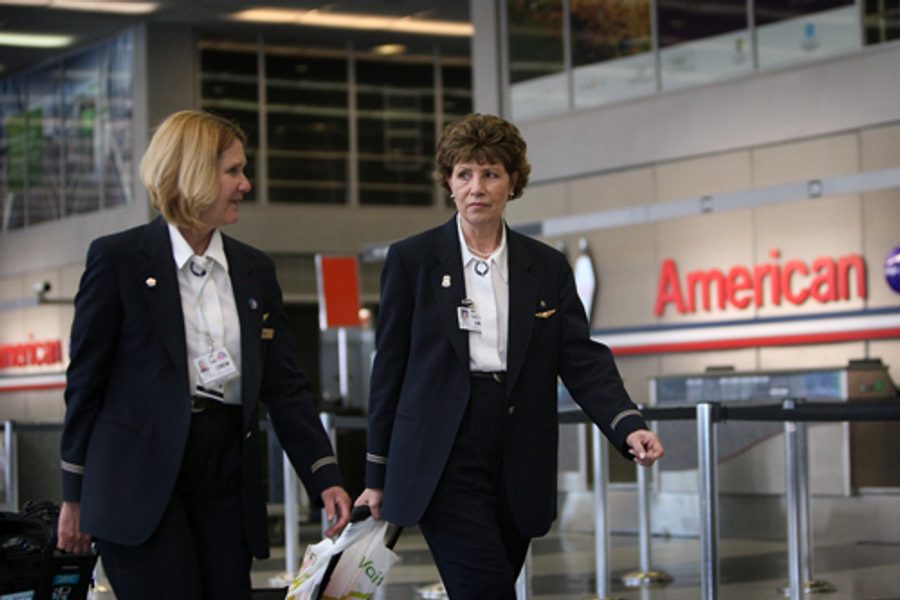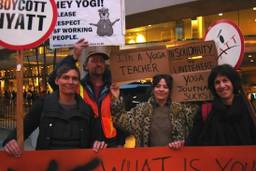
Wall Street is jumping up and down because airlines are making money again — big money. The nine largest U.S. passenger airlines posted cumulative net income (profit) of $1.45 billion for the three months ending June 30, according to Air Transport News. This is four times the income generated last year, and the good times don’t stop there: The top ten U.S. airlines will bring in profits of $2.8 billion for the current year and $3.5 billion for 2011, predicts Vaughn Cordle, founder of AirlineForecasts LLC.
But how did airlines turn their fortunes around and what does it mean for passengers and airline employees, who can both arguably be described as long-suffering victims of greed in the sky?
While it definitely is a remarkable turnaround for the beleaguered industry, it is neither a big mystery how it happened nor a big surprise that it does not necessarily bode well for either the travelling public or airline workers. Aside from mounting industry consolidation, which generates its own profit dynamic resulting from a monopoly of the skies, the profitable excesses are being accomplished the old-fashioned way: charging more fees and higher ticket prices, cramming more people into each flight and reducing service staff.
New fees, higher ticket prices and more crowded flights make clear that passengers are not the beneficiaries of the industry’s self-proclaimed “efficiency.” But neither are airline employees, who have endured major wage and benefit reductions since 2001. Anyone who has flown lately is familiar with the fees, ticket costs and flight discomfort, so I’ll focus on the the final piece in the puzzle of how airlines have so rapidly climbed out of their descent.
Passengers gouged, employees squeezed
In the last few years, bankruptcy courts ripped apart the wages and benefits of hundreds of thousands of employees. Based on long experience, veteran airline employees realize that good times returning to the carriers does not automatically mean good wages and benefits returning to them.
Labor costs at the five network airlines have fallen some 33%, or $16 billion, since 2003, according to analyst Cordle.
Consolidation of the industry will not slow this trend. Mergers allow airlines to combine routes, equipment and employees which, of course, are designed to produce a better product with fewer costs. It all appears very reasonable. But, like the example of rising ticket prices and more crowded aircraft for travelers, unregulated consolidation almost always comes at the expense of airline employees.
In fact, Continental CEO Jeff Smisek, who will run the newly-merged United, had to frankly admit in a May 3, 2010, letter to wary employees: “Mergers do result in some job losses….”
So, it’s employees and passengers that both have to deal with the harsh realities of consolidation. Travelers are held hostage to the unrelenting pricing demands of fewer airlines while workers fall victim to the monopoly profit strategy of trimming service personnel.
So, once again, the question arises: “Who benefits from fewer but bigger, unregulated airlines?”
Well, no surprise, certainly Wall Street generally loves mergers such as the UAL/Continental deal where executives predict “$1.2 billion in annual benefits…from cutting overhead….” as recently reported by Chicago Tribune’s Julie Johnsson.
But all these changes in the industry that affect both travelers and airline workers are not happening without some resistance and airline workers are actually strategically situated to defend themselves because they largely enjoy collective bargaining rights.
Air transport remains the most unionized workforce in the nation, pegged at 46% by the Bureau of Labor Statistics. But the biggest holdout was always Atlanta, Georgia-based Delta Air Lines.
Management long cultivated its patriarchal “Daddy Delta” reputation for southern charm and individual consideration as the best antidote to unionization. It was quite successful over the years, with pilots the only large unionized group.
Collective bargaining rights
But now there are a series of extremely important union representation elections currently taking place at Delta. These are quite large even by RLA standards where a company’s total national workforce in the “class and craft” is entitled to vote. The AFA is vying for 20,000 Delta flight attendants while the IAM is seeking to win over in three separate elections, 14,000 ground workers, 16,000 customer service agents and another 700 stock and store clerks.
Most of these 50,000 workers are already voting. Elections were triggered by the 2008 merger of largely non-union Delta with union-carrier Northwest Airlines. Results from the various elections will be announced from November 3 through the first week of December.
An IAM Local Lodge 1781 Tradewinds editorial appeals to Delta workers in its upcoming Fall issue: “it takes a united workforce, all of us collectively bargaining to get our points across to management and to negotiate a legally binding contract. Despite our widely different opinions on things that normally distinguish us as separate individuals, we really do share common goals of achieving a decent living and dignity on the job. Vote IAM at Delta!”
The stakes are very high. If a majority opts for no union, the carrier not only remains the largest non-union airline but IAM and AFA workers integrated into Delta from the former unionized Northwest Airlines will immediately lose all their inherited contract rights and benefits.
If successful, however, new members of the IAM and AFA will exchange the nebulous “Daddy Delta” culture for a set of legally-binding labor protections. Perhaps service cuts that normally accompany downsizing of a merged airline will be successfully averted.
Clearly, a workforce with collective bargaining rights is in a stronger position to reverse past concessionary bargaining and to counter any future adverse affects of consolidations.
Employees and passengers often do not recognize that together they share common goals of promoting a viable and successful transportation system with fair pricing and reasonable working conditions. It is extremely important for both to support their mutual interests.







